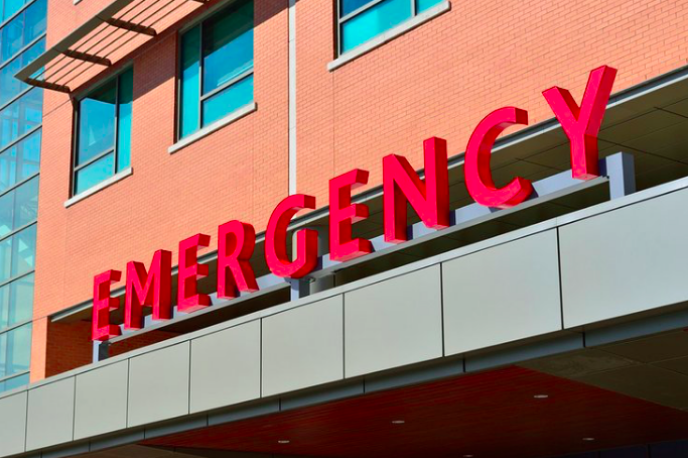
October 03, 2023
 Source/Pexels.com
Source/Pexels.com
Drug overdose deaths in Philadelphia increased by 11% to 1,403 in 2022, the highest number on record in the city. Fatalities are rising most among Black and Hispanic people.
Unintentional drug overdoses increased by 11% in Philadelphia last year, soaring to the highest annual total on record, the city's health department said Monday.
More than 80% of the 1,413 fatal overdoses were attributed to opioids — specifically fentanyl, which made up 96% of opioid-related deaths. The synthetic drug, up to 50 times stronger than heroin and 100 times stronger than morphine, has largely supplanted heroin as the predominant street opioid in the U.S. Its use as a mixing agent for other drugs has fueled the nation's overdose epidemic in recent years, with a growing impact on communities of color.
Philadelphia's rise in overdose deaths over the last several years has been most prevalent among Black and Hispanic people. Fatal overdoses in these groups increased by 87% and 43%, respectively, from 2018 to 2022, the health department's annual report says. Last year, 649 Black people died from drug overdoses, up from 347 in 2021. Another 612 Hispanic people fatally overdosed, up from 537.
"The fact that this crisis is spreading across the city and moving into Black and Hispanic neighborhoods like never before is heartbreaking," Health Commissioner Dr. Cheryl Bettigole said. "For those who mistakenly thought that this was a problem contained within Kensington, these data show that is not the case."
Opioids mixed with stimulants, like cocaine and methamphetamine, accounted for the sharpest increases among Black and Hispanic people. Overdose deaths caused by this mixture have risen 146% among Black people and 81% among Hispanic people in the last five years. Deaths from opioids alone also rose in these groups, but at lower rates.
Among white people, overdose deaths decreased by 12% in 2022, but there was a 7% increase in deaths linked to opioids combined with stimulants.
Cocaine was found in more than 70% of all overdose deaths in the city last year, up from 67% in 2021. Fatalities caused just by stimulants rose by 13% in 2022, although most deaths related to stimulants also involved opioids.
The trend of fatal opioid overdoses rising among Black people also has been seen at a national level since the start of the COVID-19 pandemic.
Researchers at Penn Medicine examined this increase in a study published in 2021. Though there appear to be multiple causes, the researchers suggested that fentanyl's mixture with other street drugs, including cocaine, may have led to more people of color using it. The researchers also noted that treatment for opioid use remains less accessible to disadvantaged groups than it is to white drug users.
The city's increases in overdose deaths over the last two years — 5% in 2021 and 11% last year — come as overdose fatalities appear to be flattening nationwide. In May, federal data showed a preliminary count of 109,680 fatal overdoses last year from all types of drugs. More than 75,000 of those deaths were attributed to synthetic opioids like fentanyl. Those figures more-or-less mirrored data from 2021, according to the National Institute on Drug Abuse.
Still, overdoses from opioids remain very high. In 2010, there were 21,089 opioid-involved overdose deaths. That number rose to 47,600 in 2017 and 68,630 in 2020 as fentanyl became more widely distributed in the drug supply.
Fatal overdoses occurred in nearly every Philly ZIP code in 2022, according to the health department's report. The neighborhoods in and around Kensington and North Philly were the hardest-hit, but parts of South Philly, Southwest Philly and Northeast Philly also saw increases in deaths.
The people dying of overdoses in Philly also are getting older. The median age of people who fatally overdose has risen from 43.5 in 2018 to 48 in 2022. Among Black men, the group with the highest number of fatalities, the median age of death was 55 last year.
Philadelphia's drug supply also has been heavily tainted with the animal sedative xylazine. The veterinary tranquilizer is mixed with fentanyl to make "tranq dope," a rapidly spreading drug that the White House has deemed an "emerging threat" in the U.S.
Xylazine was found in 90% of the street opioid samples the health department tested in 2021 and was detected in more than 44% of fentanyl-involved overdose deaths.
Drug dealers use the animal sedative to prolong the high that fentanyl users experience, because fentanyl is not as long-lasting as heroin. Xylazine causes complications for first responders treating overdoses because the drug's symptoms, like shallow breathing, can be difficult to distinguish from those caused by fentanyl. In some users, xylazine also may produce skin wounds that become seriously infected if not properly treated.
The city is taking a number of approaches to address fatal drug overdoses.
Naloxone, the opioid overdose reversal drug sold as Narcan, is now available over-the-counter at major retailers like CVS, Rite Aid and Walmart. The city helps distribute Narcan at pop-up events, by mail and at a 24/7 naloxone kiosk installed outside Lucien E. Blackwell Library in West Philly.
In Black and Hispanic communities, more health department outreach is being done to educate people about the risks of stimulants that have been adulterated with fentanyl, officials say. The city has five resource hubs that offer Narcan and test strips for fentanyl and xylazine, in addition to other health supplies.
Additional resources offered by the city and its partners include field-based care for xylazine wounds and increased support for rapid transfers to get people into treatment directly from emergency departments and jails.
"The 2022 overdose report underscores the urgent need for greater awareness and more tools to fight growing overdose epidemic in Philadelphia and across the U.S.," Mayor Jim Kenney said. "It is no longer accurate to call this an opioid epidemic; it is an overdose epidemic driven by an increasingly contaminated drug supply."